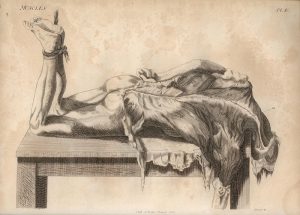
Mary Shelley’s seminal novel “Frankenstein; or, the Modern Prometheus” was published 200 years ago in 1818. Since then it has never gone out of print, and it has been reinterpreted in film, theatre, and even ballet. Its enduring popularity can be attributed to the timelessness of its themes. “Frankenstein” is not just a simple story about a man creating a monster; it is a tale about obsession, hubris and the perils of pushing the boundaries of scientific inquiry too far.
Although the novel was written in the 19th century, it actually takes place at some point during the 1700s. This was a time of considerable intellectual excitement in Europe. Chemistry was casting off the last vestiges of alchemy to become a modern science, anatomists were increasingly interested in uncovering the secrets of human generation and electrical demonstrations were a source of both entertainment and serious intellectual investigation. Victor Frankenstein, the tormented antihero of Shelley’s novel, was very much a product of these turbulent times. As a child, he found inspiration in the writings of alchemists; as a young man studying at the University of Ingolstadt, he became enamored of chemistry. His keen interest in constantly pushing the boundaries of science eventually led him to achieve the impossible, with tragic results.
“Making a Monster,” a new exhibit of rare books, shines a light on the intellectual forces that shaped Frankenstein, from his childhood through his university days. The exhibit can be viewed now through Jan. 22, 2019, Monday through Friday from 8 a.m. to 6 p.m., in the Glaser Gallery on Becker Library’s 7th floor. It is free and open to the public. For more on Washington University’s year-long Frankenstein bicentennial celebration, visit frankenstein200.wustl.edu.

Kunstkammer. Rorschach am Bodensee : [publisher
not identified], 1598.
